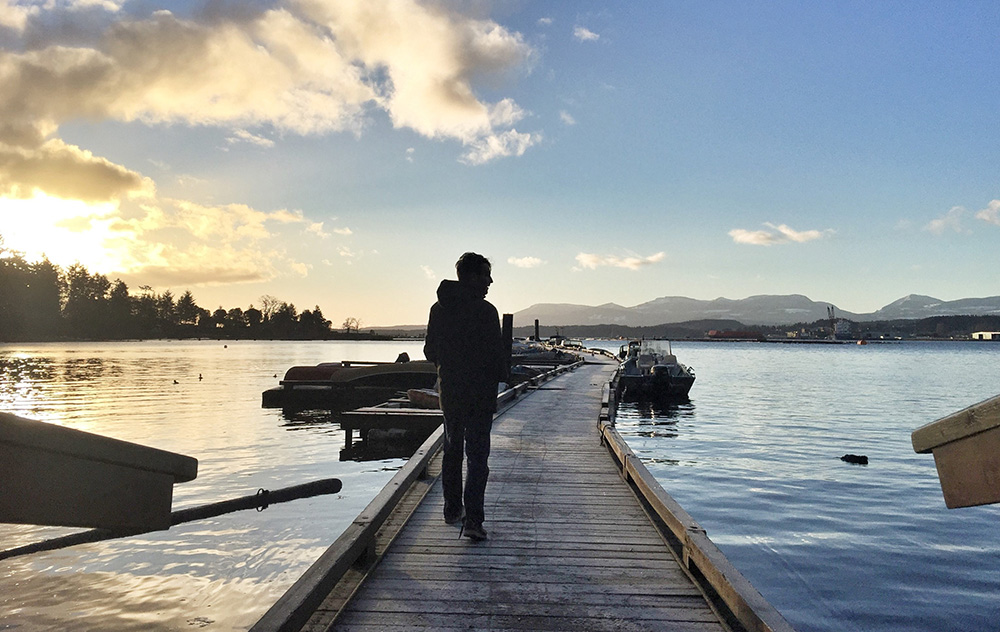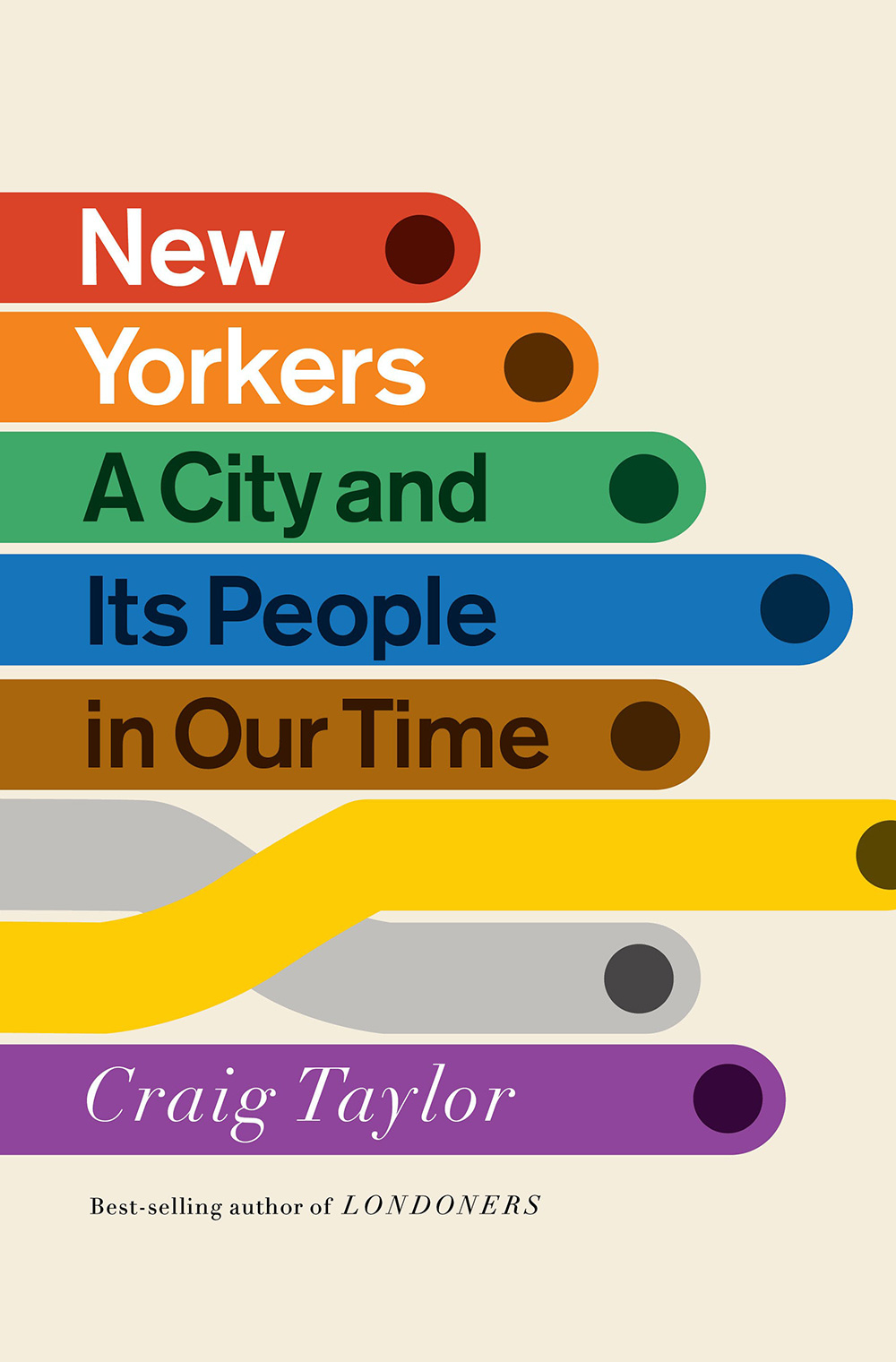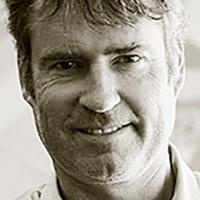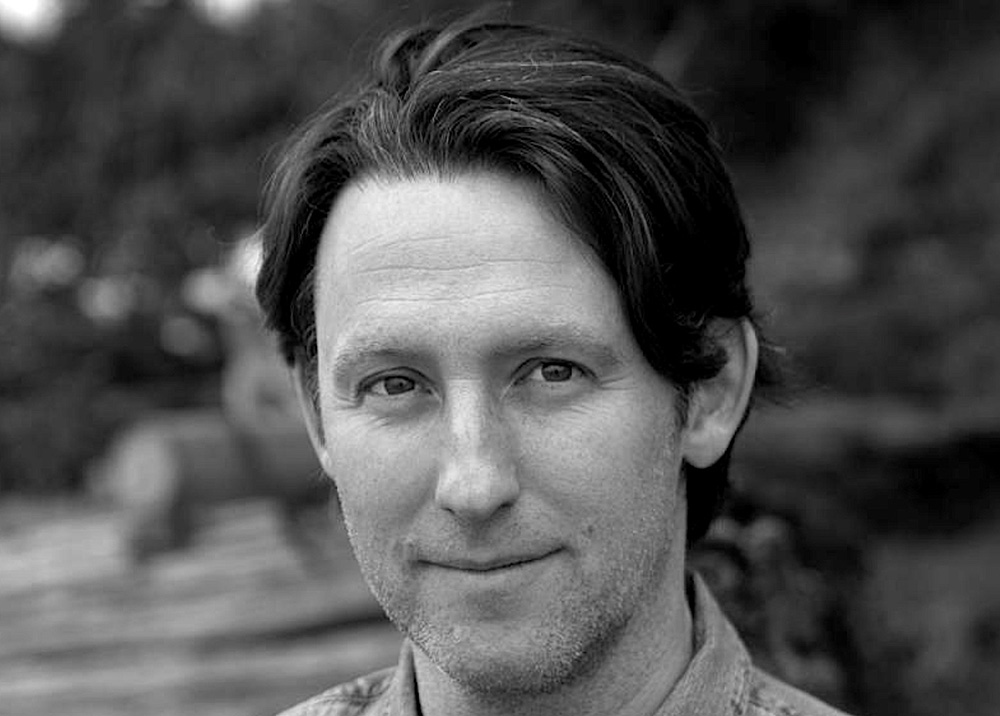Craig Taylor, who grew up on Vancouver Island, had a surprise bestseller with Londoners, a fascinating, kaleidoscopic “oral portrait” of Britain’s capital published to wide acclaim in 2011. He’s spent much of the last decade working on the sequel, New Yorkers, shuttling between Manhattan and his writing shack on Protection Island, in Nanaimo harbour.
For the new book, which is receiving glowing reviews, Taylor interviewed around 200 New Yorkers; 75 of them appear in the book, including a sommelier, a cop, a private cook, a window cleaner, a dentist, a car thief, and a security guard at the Statue of Liberty, talking about their home city and why they love, hate or just can’t seem to leave it.
On the eve of its publication, Taylor talked to The Tyee about the art of gathering people’s stories, wearing a Canadian identity in London and New York, working slow, and more.
Scott Steedman: Could you explain your process; how do you go about writing a book like New Yorkers?
Craig Taylor: It’s so informal. I’m always impressed by sociologists or other people who go through a systematic interviewing process. I just head out and work, and after a few years emerge and take stock of what’s there.
I work with a list of verbs — many can be applied to places like New York or London. It’s one way to ensure I’m interviewing people about action rather than asking them to reflect. Because the book is about action it takes a reader into different worlds. People love to talk about what they do, and in doing so they reveal a lot about their lives, their joys, their pains and everything else.
That’s a very Studs Terkel thing; the subtitle of his book Working is People Talk About What They Do All Day and How They Feel About What They Do.
Absolutely. A lot of people don’t ever get to talk about what they do. A subway conductor does the job for 30 years. Does he come home every night and describe what he does to his wife? I don’t think people do that.
The list of verbs is also helpful when I’m feeling despondent. I just pick one and say, OK, today I am going to find someone who is cleaning New York. It narrows the mind.
How do you find the people you want to talk to?
It’s organic, it’s hit and miss, it’s a lot of cold calls, writing to people, a lot of luck. Sometimes you have to interview a few people who do one job. I interviewed a few dogwalkers before I found someone who not only loved the job but could speak with eloquence. It’s like farming. You go out, work hard, gather the material, try to pull in as much as you can. At certain points it’s good to examine what is there, but for the most part it’s just get up, make calls, write to people. And keep the antenna out. In New York, a lot of people wanted to recommend someone to me.
There are connections between some of the people you interview; the reader realizes, oh, that’s the guy the previous person mentioned.
I wanted the book to be more than a series of slapdash interviews; I wanted the experience of reading it from start to finish to make sense. Someone will mention a figure and that person will emerge on the next page. The meditation teacher tells the story of his childhood, and then his father appears and retells the story and pushes it in a new direction.
I love when a work of non-fiction can move in that way. It’s closer to the feel of fiction. Telling and retelling stories is always interesting. We know how pleasurable this can be from Rashomon and Pulp Fiction and so many other fictional examples. I’m always attuned to that, always hoping for it, in non-fiction.
Did you do all your interviews in person?
I think there were two on the phone, because of COVID, some of the very last pieces: I spoke to Gladys, the 911 operator, over the phone. But this type of work should only really be done in person.
Why?
Because it’s an improvisation you’re trying to create with somebody. You sit down with them and give them your full attention, and try to create something together, allow them to tell a story and hopefully speak in a more poetic way. A lot of people do. It is an improvisation that becomes alive in the moment. When you’re doing it on the phone, there isn’t that same connection.
It’s interesting that you talk about your role in this, like it’s not just one person talking, it’s a conversation. And you actually feature in the book more than you did in Londoners, you’re a character.
The reader should be aware I’m present. The book is meant to read like someone just sits down and speaks, but there’s a lot happening behind these interviews, and I was keen to occasionally appear in outline. One person in the book makes fun of me, goes on a whole riff about me falling on my face and breaking my nose. Others address me, question me. I wanted to appear in understated ways, reflected and referred to.
I really love Rachel Cusk’s three Outline books in which the reader senses a presence, a character who is listening to all these stories. You get a sense of her from how she listens. I could never do what Rachel Cusk does in those books, but it was a useful guiding light.

I laughed at those bits in the church where they call you “the Canadian.” It’s clear you’re not a New Yorker.
That’s been a constant in all three of these book projects — I get made fun of. When I did my first book, Return to Akenfield, I was interviewing people in the Suffolk countryside and the farmers and farm workers were mystified, they thought I was some sort of strange American, they couldn’t place me. People reacted to me in Londoners as a Canadian. But I was made fun of constantly in New York for being a Canadian.
What does a Canadian represent to them?
A lesser human being! Not a New Yorker. In the pyramid of humanity, the New Yorker sits at the very top. Where the Canadian is on the pyramid I don’t know, but it’s certainly never going to be on the top.
But for some people who have never left New York, never travelled, Canada was a mythical place. For some, who wanted to leave, my being an outsider became a subject we bonded over. Being Canadian is always an interesting trait in documentary work. It allows you to ask a lot of questions.
The book is called New Yorkers. So who is and who isn’t a New Yorker?
I always let people define the term themselves. I took my cue from Londoners, where one guy I interviewed said he was a Londoner, and he’d just shown up in the city. The definition is up to the people, who either want it or don’t want it or bat it aside. Who am I to decide?
When I was reading the book, I kept wishing it was being read to me by the interviewees, in their voices. It would make great radio, or a great audiobook.
The audiobook is released on the same day as the book [March 23], and features 10 actors playing roles that correspond to the backgrounds of the interviewees. Here’s hoping it’ll be good. The producers conducted a long factcheck to ensure the pronunciations of various New York details were correct. You wouldn’t want to mispronounce Mookie Wilson.
The launch on Tuesday will feature one of the interviewees reading out his piece. He’s an actor, Craig Geraghty, who talks about running the New York Marathon, and then goes on to say a few really poignant things about what the city is becoming.
I really liked that piece, I found it really emotional what he was saying at the end about how people don’t like that way Queens has changed, and he’s like, “Hey, this is America, this is New York! It’s a melting pot.”
I loved that the sentiment came from him. It arrives unexpectedly. This white guy from Queens has an incredibly passionate view about what New York is, and he’s not going to play ball with others who do what he describes as “the lean-in.” They lean closer and say, “Oh it’s changed though, hasn’t it?” I loved that he is celebrating the neighbourhood he grew up in as it changes.
When you meet with people, how do you make them comfortable?
You just have to spend time with them. So much journalism is done quickly. You can feel that. In celebrity interviewing, you get ushered into a room, you have 15 minutes, there’s a PR person sitting next to you saying things like, “You can’t ask that.” And you’re supposed to create an authentic interaction? It just doesn’t work. You have to be with people and spend time with them. There’s no shortcut. I’ve been lucky to work on long projects that allow for lots of time to be spent, because I can’t do it any other way. These books can’t be forced.
Do you think of yourself as a journalist?
What are any of us these days? This may be closer to playwrighting than anything else. It’s interviewing, it’s journalism, it’s writing, I’m out there writing down pieces of prose. I don’t worry about definition too much. I love New York street photographers. They just get up and go out and capture the city. Is it fine art, is it journalism? Whatever, they just get up and leave the apartment. I think that’s a great thing to emulate.
I want to make books that are meaningful, that feel lived in. Is it history, travel, journalism? Who knows. Those intersections are where a project becomes unique, I hope.

Who are your inspirations when it comes to oral history? I mentioned Studs Terkel but do you admire Svetlana Alexievich, Joseph Mitchell?
Definitely. It’s not a big pool, the people who pioneered this field. Obviously Studs Terkel, and Svetlana’s books are incredible. And Ronald Blythe, who write the original Akenfield. Though he was more of a poet than a journalist or an interviewer. For New York, Joseph Mitchell is kind of an oral historian, because his books have so much voice in them. And I really love and admire the filmmaker Frederick Wiseman.
And I always remember reading The Savage Detectives by Roberto Bolaño, which is a fictional oral history of sorts, with all its flowing voices. It coheres in such a fascinating way. I thought, ‘Oh, so this is what the form can do.’ Or even World War Z, the zombie oral history. Edie, the book about Edie Sedgwick by Jean Stein and George Plimpton is a stunning example of how the form can be used.
You just have to take from everywhere and not think, I’m going to be like Studs Terkel. There’s a lot to hate about the Motley Crue oral history, but I do love the way they all disagree with each other. That is a fascinating form of non-fiction storytelling, where everyone is calling each other a liar. In a book that’s so full of misogyny, I like that one element!
You said earlier, there’s good oral history and a lot of boring oral history — what’s the difference? How do you tell what’s good and what isn’t?
It’s like novels — there are some great novels and some bad novels. The phrase itself — ‘oral history’ — is so dry. When I hear it I think of its civic or municipal uses, when someone records, say, a hundred old people who lived in a certain place. Which is amazing for an archive, a museum. But what I’m interested in is way different from indiscriminate recording. Oral history is an odd term, it’s too much of a catch-all phrase. I feel like prying it apart. I’m interested in the choral nature of this work, the collage that’s possible.
But when you’re talking to someone, how do you know if it’s going to make a good interview?
You never do. You never know if it’s going to translate. Even if they have a fascinating story, the onus is on them to tell it well. It’s a big ask. That’s why there’s so much miss in the hit and miss. But then sometimes it’s extraordinary when you’re speaking to someone and they feel comfortable and excited and want to share, and they’re thinking vividly, incorporating all five senses, which is something I often ask about. It comes back to that sense of improvisation. At best a moment arises — someone speaks, in real time, about themselves in a new way.
Speaking of the five senses, the opening piece, the blind man who walks the length of Manhattan describing the sounds and smells, is really evocative. And a great way to start your story of the city.
He’s doing overtly what I hope I guided others to do. When you start asking people about the five senses, they head in interesting directions. Frank [Senior] is an excellent example of someone who is constantly thinking about his senses, because he can’t see, and New York to him is so alive with taste and smell and sound. And he’s a singer so he has this beautiful voice — I could listen to him describe what he smells and hears in New York all day long.
The last section is about the pandemic, which hit the city really hard. Do you think it will recover? And how will it be changed?
It will be changed permanently and it will recover. There’s just no other option in New York. They’re experts at recovery, at resilience.
I was told by one person that he would move out of the city if something serious happened, but not something small like a terrorist attack, or a hurricane or a pandemic. I love that idea, that sure, New York could fall apart, but something serious would have to happen, not just these catastrophes that it’s gone through in the last 20 years.
'New Yorkers: A City and Its People in Our Time' by Craig Taylor is published by Doubleday Canada.
To attend the virtual launch this evening, on March 23, register here. ![]()
















Tyee Commenting Guidelines
Comments that violate guidelines risk being deleted, and violations may result in a temporary or permanent user ban. Maintain the spirit of good conversation to stay in the discussion.
*Please note The Tyee is not a forum for spreading misinformation about COVID-19, denying its existence or minimizing its risk to public health.
Do:
Do not: